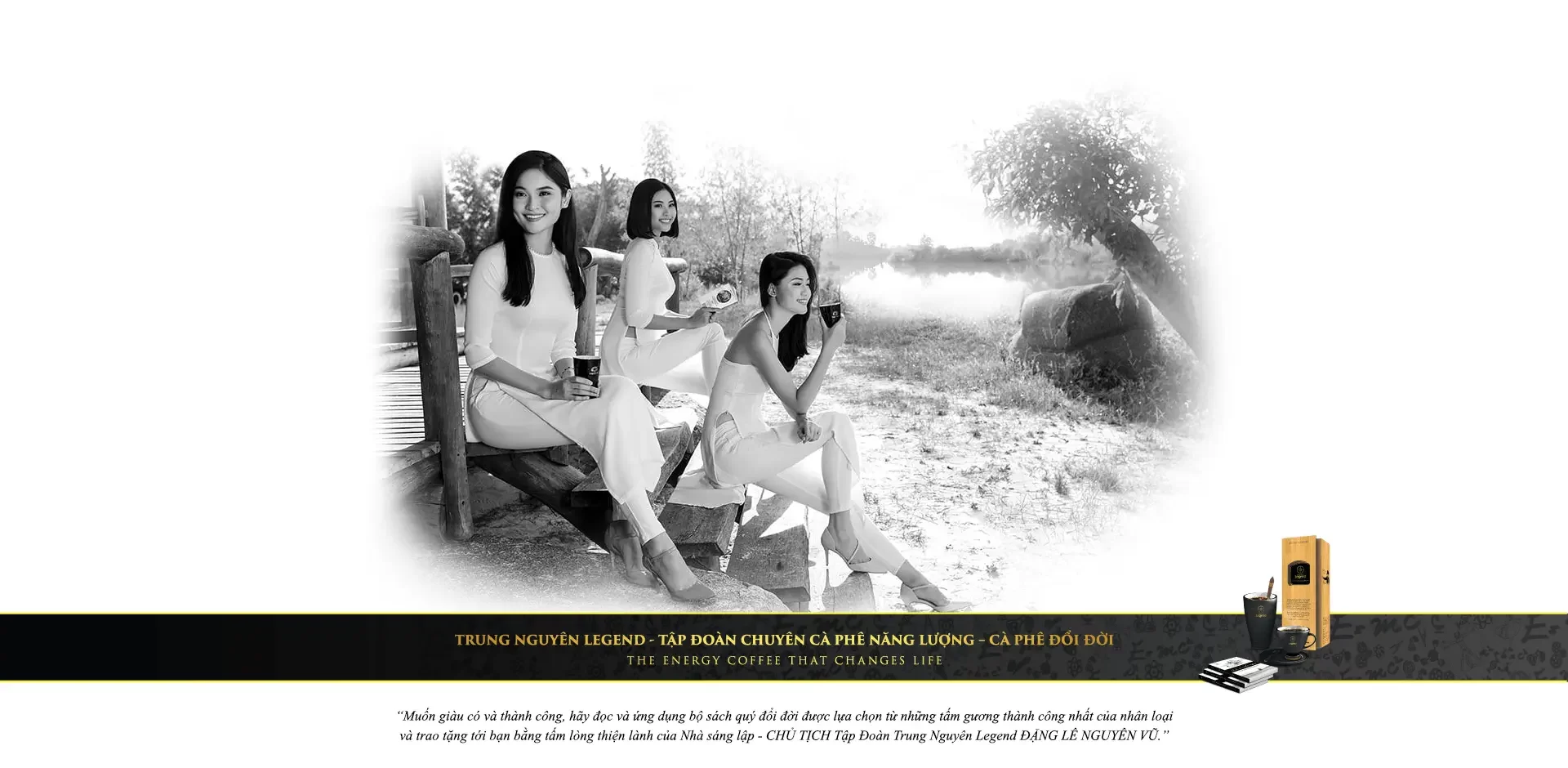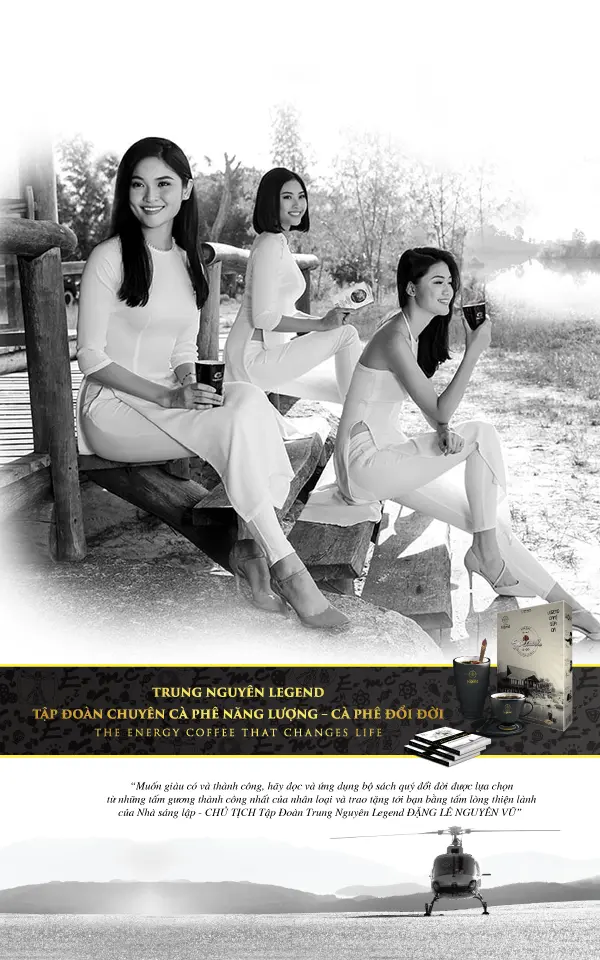Article 35: The painter Oskar Kokoschka and the expressionist movement that started in the cafe
Coffee shops are the embodiment of the times, which authentically reflect the human outlook, the worldview of the period in which they originate, exist and develop.
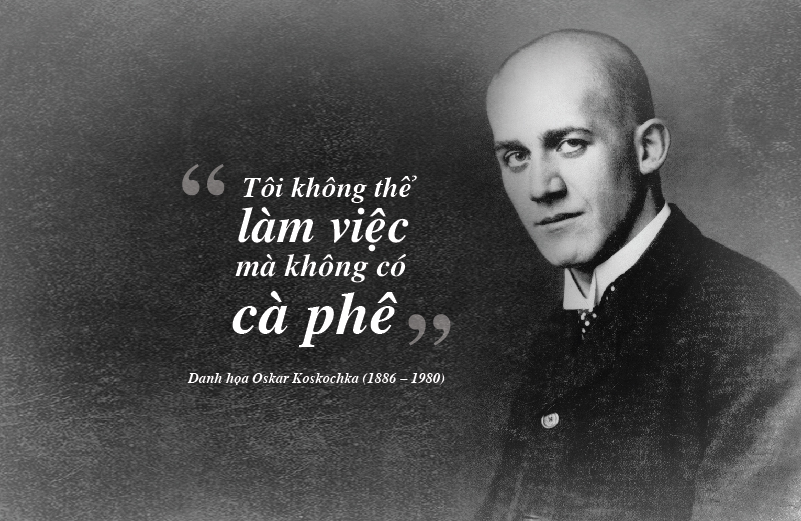
“I can’t work without coffee” – Oskar Koskoschka (1886-1980)
In the last years of the 19th century and the beginning of the 20th century, in Vienna, a new wave of intellectuals formed with the development of all areas of life, creating a characteristic of the liberal and humanistic spirit in the “Fin de Siecle” (The Moment of Transition). Various art forms, especially painting, were born under the great influence of the spirit of humanity and freedom. Modern art must be the art of “putting bare feet on the ground”, deeply exploring the mysteries inside people, which is the inner world. Modern painting must be associated with the new, different from the traditional, different from the classical, and enter new horizons to explore human nature but not to negate the tradition, not to despise the classical.
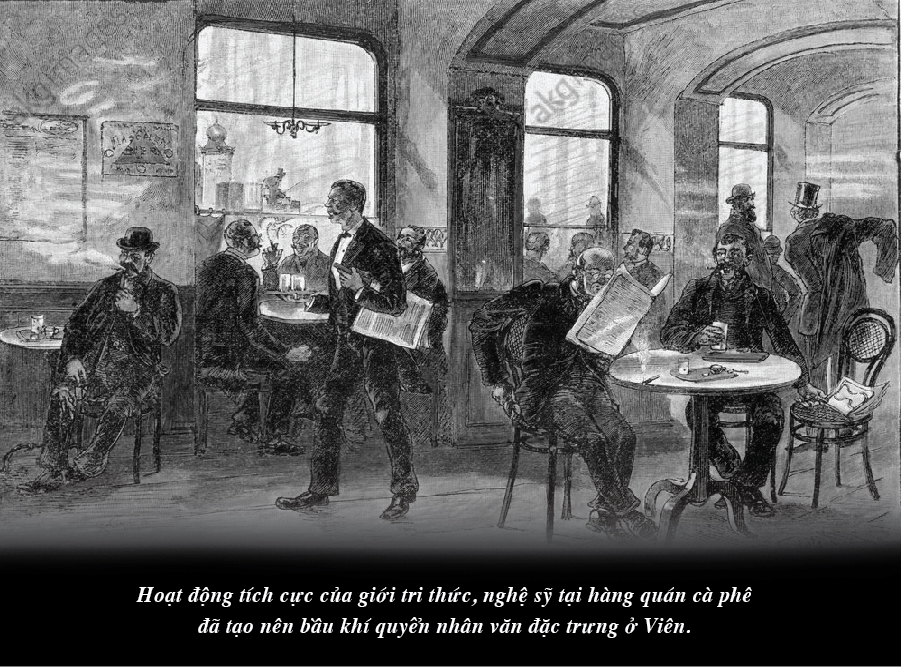
Active activities of intellectuals and artists at cafes created a typical humanistic atmosphere in Vienna.
In the midst of that wave of new-age spirit, at the Museum Café, the painter Oskar Kokoschka met the architect Adolf Loos – the designer of the Museum Café. This is considered an important milestone marking a turning point in the career of painter Oskar Kokoschka. Adolf Loos quickly brought Kokoschka to join the art group at Museum Café such as Gustav Klimt, Egon Schiele. Since then, Oskar Kokoschka’s writing style had important changes. He broke out of the classical painting style and laid the first foundations for the Expressionism movement, one of the painting movements that had a great influence on Western art in the 19th century.
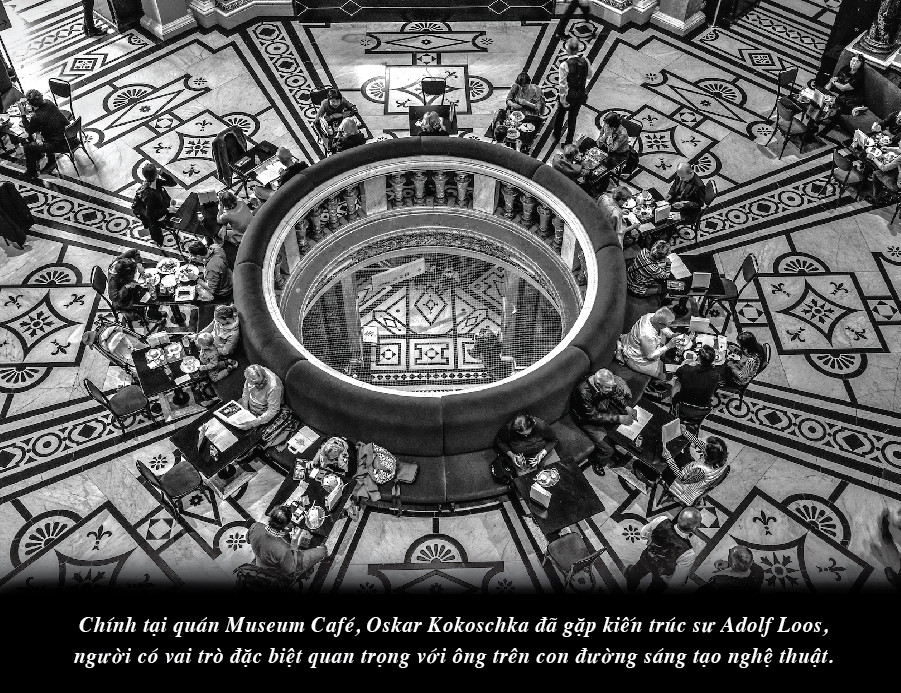
It was at the Museum Café that Oskar Koskoschka met the architect Adolf Loos, who played a particularly important role for him on the path of artistic creation.
The painting Trance Player (1909), a portrait of the actor Ernst Reinhold, is known as one of the first works to express this tendency, created by Kokoschka after meeting Adolf Loos at the Museum Café. Bearing the features of symbolism such as distortion and exaggeration of shapes, colorful and powerful application of color, his work successfully calls the audience’s attention from subject to artistic process and then finally the artist’s vision. The role of portrait painting was also reshaped by Oskar Kokoschka, becoming a visual metaphor for the virtual world of the inner life of the subject, the author and the viewers.
Breaking out of the framework of traditional rules, the Expressionist movement was a declaration of dissatisfaction with the ideal beauty that was the standard of classical painting and became the voice of people in the new era, moving towards the spirit of humanity and freedom. Painting through the lens of Oskar Kokoschka was to convey the creative process and emotional messages of the artist hidden deep beneath the surface of the paintings.
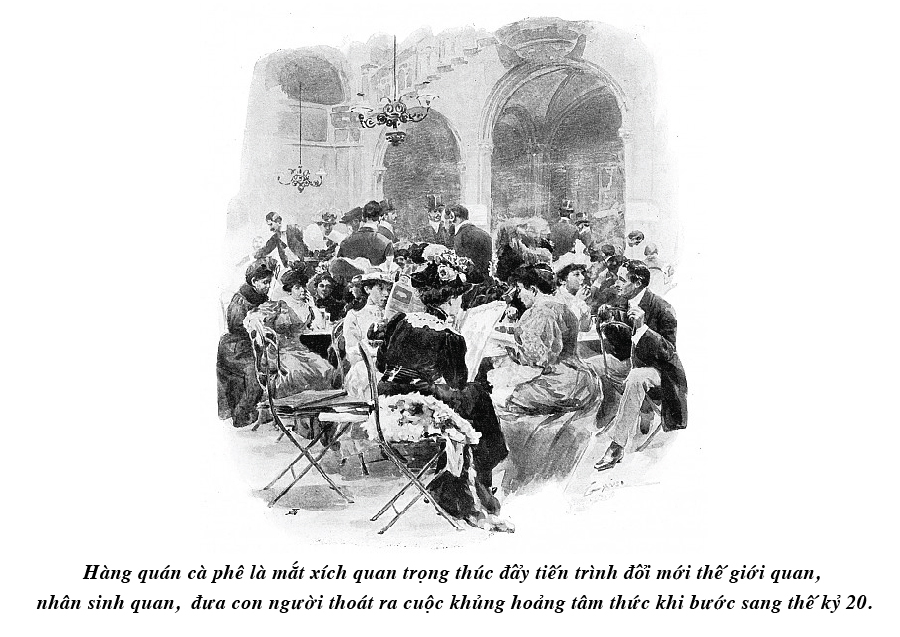
Coffee shops were an important link to promote the process of renewing worldview and lifeview, bringing people out of the crisis of consciousness before entering the 20th century.
It can be said that if the Expressionist movement started by Oskar Kokoschka was the voice of the new era, the cafes in Vienna would be the place for that voice to rise, interfere and spread strongly. This was the convergence of the quintessence of knowledge, culture and art of the era, where painters, writers, musicians and scholars would spend all day debating and exchanging, as well as finding inspiration for creativity. Each coffee shop in Vienna therefore also had its own attractive features. The Museum Cafe was well known in the art world, frequented by artists such as Gustav Klimt, Egon Schiele and Oskar Kokoschka.
The cafe was an ideal “oasis” for artists in Vienna to spend hours over a cup of coffee, quietly feeling life, as well as make an important contribution to groundbreaking artistic creations. Along with that, it became an important link promoting the process of movement and change of the confluence of the “cultural boom” creating the typical humanistic atmosphere of the “Fin de Siecle” era of Vienna.
THE REAL COFFEE
ROASTED ONLY FOR PEOPLE OF WISDOM!
Source: “The Philosophical Way of Coffee” – copyright by Trung Nguyen Legend

